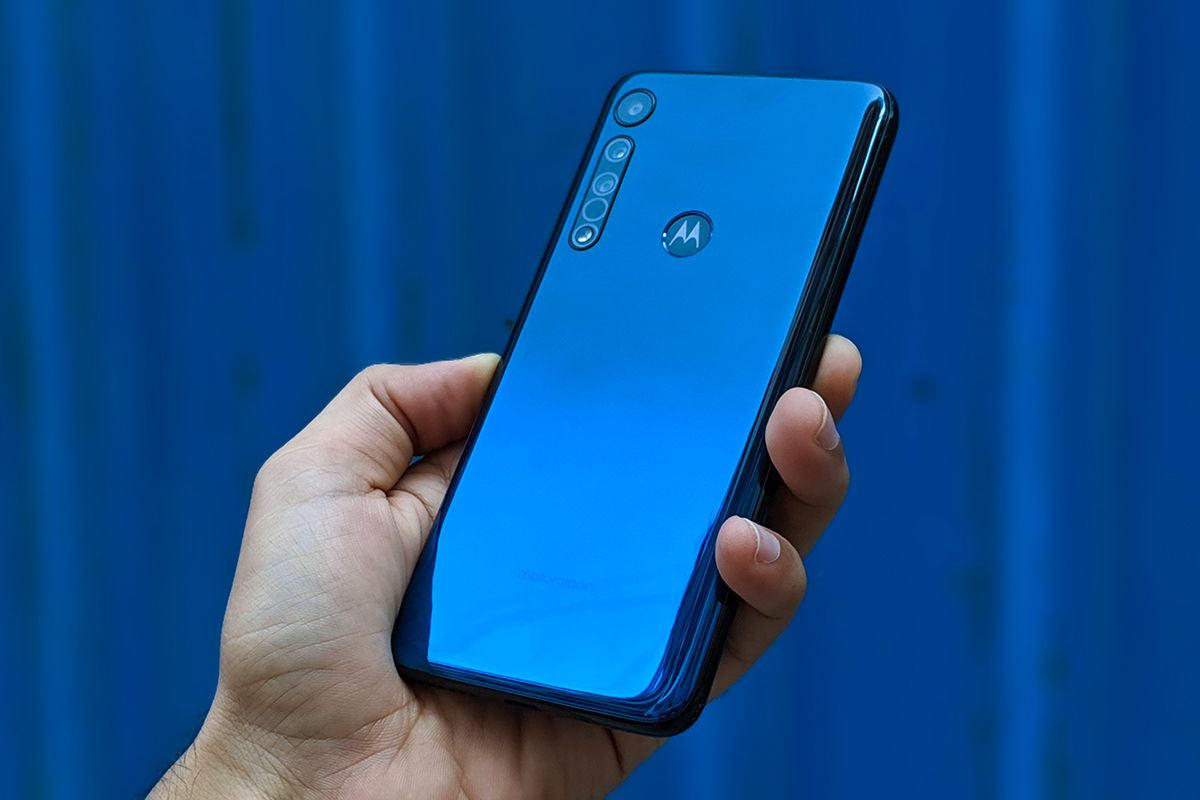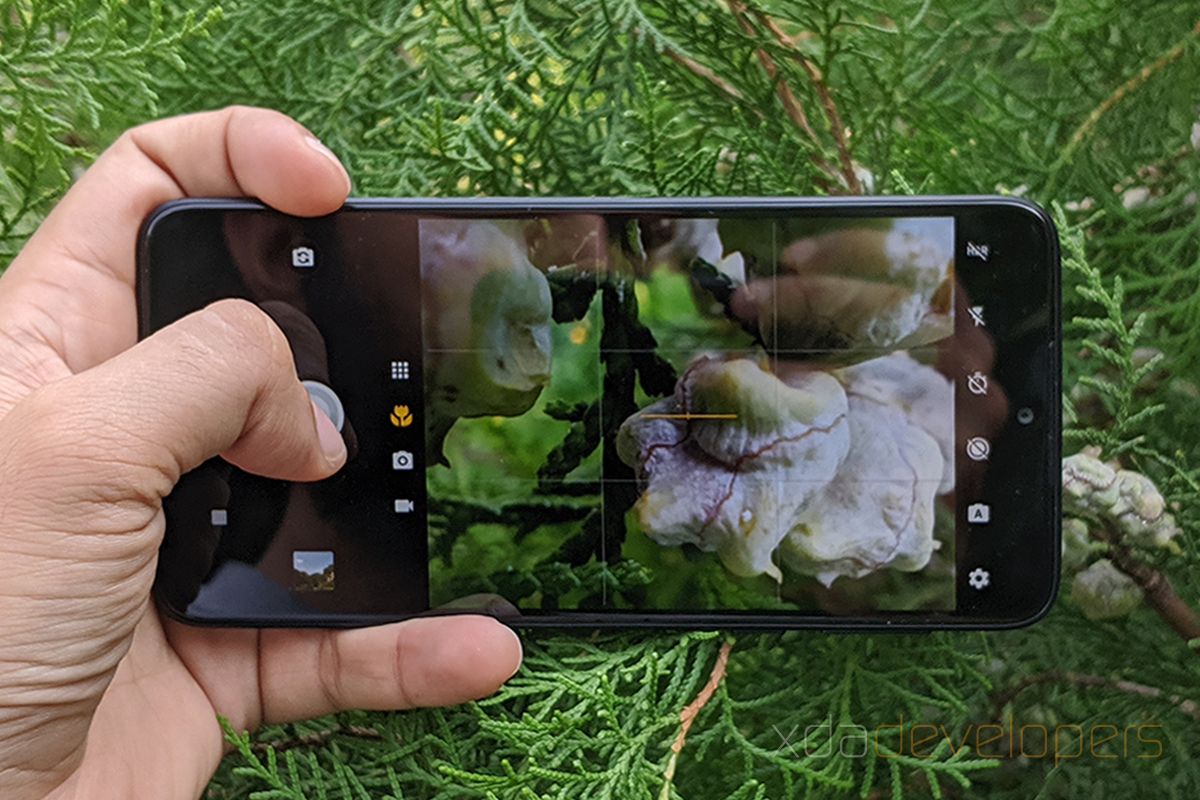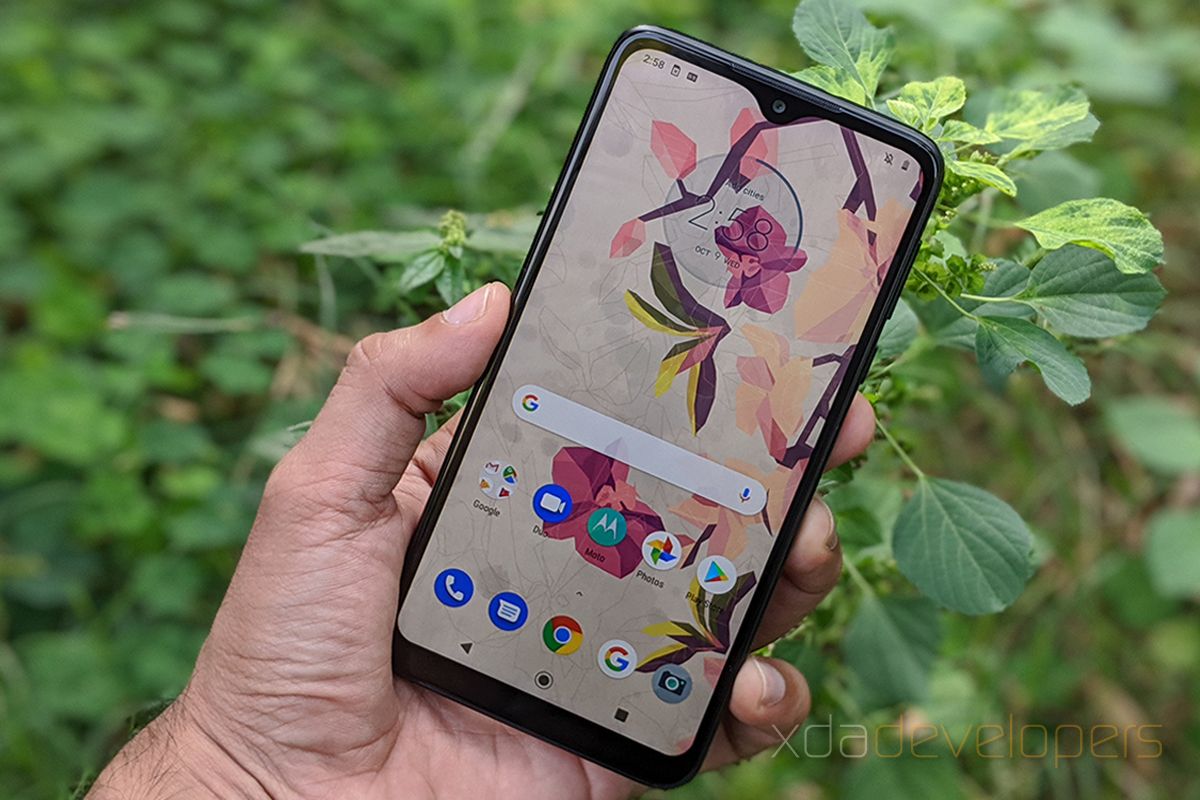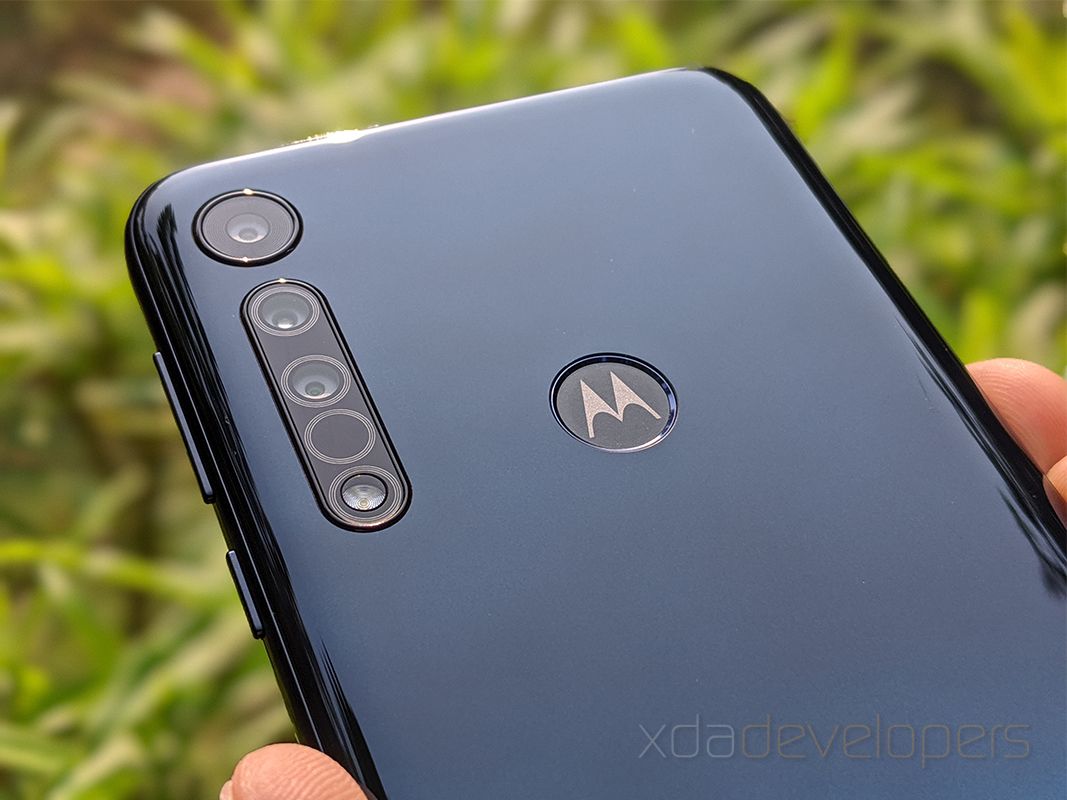The race to broaden the scope of budget smartphone photography is more intense than ever. Brands like Realme, Redmi, Honor, and others have tried to outpace each other by introducing budget and mid-range devices with as many as four cameras on the back. Motorola is trying to enter this competition but with the philosophy of one sensor at a time. To that end, Motorola announced three camera-centric smartphones in the Motorola One series earlier this year: the Motorola One Vision, One Action, and One Zoom. Continuing this trend, the company recently unveiled a fourth device this year in the Motorola One series, and it focuses on macro photography. The Motorola One Macro comes with budget specifications, and its biggest highlight is its 2MP macro camera.
While 2MP macro sensors have been instrumental to this fad of multi-camera smartphone photography, Motorola is the first brand to actually pay attention to the actual utility of the camera, especially at an affordable pricing segment. To really take advantage of this sensor, the macro camera on the Motorola One Macro supports autofocus, which allows it to take macro images from a close distance of just 2cm (~0.8"). While the macro camera puts the One Macro ahead of its competition, it raises one question: Is macro photography a big enough feature to justify purchasing a smartphone? We explored this question in our camera review of the Motorola One Macro.
Motorola spent some years dabbling with experimental technologies like modular components, but that has not attracted many users. Motorola's current philosophy of more conservative experimentations, on the other hand, has played relatively well. Unlike its competitors that burden consumers with a lot of options, Motorola has always launched single variants of their devices, and the same goes for the Motorola One Macro. It comes in a 4GB/64GB configuration with a hybrid microSD card slot for expandable storage.
The Motorola One Macro was first announced in India, which also happens to be the first market where the smartphone is available. Motorola has kept the price under Rs. 10,000 (< $150) since this price bracket has the most success in the country. The smartphone was also announced globally alongside the Moto G8 Plus, Moto G8 Play, and Moto E6 Play, and it will be available in Latin America, Europe, the United Kingdom, and Australia. The pricing in these areas is higher compared to India due to a lack of competition from other brands.
In this article, the primary focus will be on the macro photography skills of the Motorola One Macro. But before we dive into the details, let me give you a quick overview of the specifications, the design, and the display on the Motorola One Macro.
Motorola One Macro Specifications
|
Specification |
Motorola One Macro |
|---|---|
|
Display |
|
|
SoC |
MediaTek Helio P70
|
|
RAM |
4GB |
|
Storage |
64GB, hybrid microSD card slot |
|
Battery |
4,000 mAh |
|
USB |
Type-C, 10W Fast charging |
|
Headphone jack |
Yes |
|
Rear Cameras |
|
|
Front Camera |
|
|
Connectivity |
|
|
Android Version |
Android 9 Pie |
Solid build leaves a good first impression
The build quality of the Motorola One Macro impressed me when I first got my hands on the device. In the palm, the smartphone feels very rigid and shows no sign of bend or flex even though Motorola primarily relies on polycarbonate for the construction. The rear panel comes with a reflective blue finish, but unlike the last two devices in the Motorola One series – the Motorola One Vision and the One Action – there's no underlying pattern. The smooth surface, with a gradient between light and dark shades of blue, can be easily mistaken for glass, but the surface's tendency to get easily scuffed might call for some attention or the use of a case. Fortunately, Motorola includes a transparent and flexible TPU case in the box.
The smooth finish on the back panel is punctuated by the in situ Motorola logo which lies on top of the fingerprint scanner. Motorola is keeping it simple in terms of button placement, and the overall design is in line with their previous phones; the power and the volume buttons are on the right side, while the left side features the hybrid SIM slot. The bottom has a USB-C port, the primary microphone, and the mono speaker, whereas the headphone jack and the secondary microphone are on the top. The power button is accented with grooves and overall, the buttons feel very tactile and solidly built. Meanwhile, the frame is made of plastic and is finely laid with glitter that becomes visible under strong light.
Under the plastic, Motorola is using an aluminum skeleton to reinforce the build. This does make the Motorola One Macro bulkier but also very sturdy, especially in comparison with many other devices in this price bracket that flex easily even with little pressure applied. There's a tiny "Motorola One" logo etched near the bottom of the back panel, and Motorola has decided to continue with the "One" branding even though the phone is not part of the Android One program.
On the front, the Motorola One Macro features a 6.2-inch IPS LCD with a resolution of 720 x 1520. This panel has a 19:9 aspect ratio and noticeable bezels including a thick chin, all of which collectively results in a screen-to-body ratio of 82%. Despite the HD+ resolution, the display is fairly crisp, and Motorola India told me that they have worked hard to make the lower resolution less noticeable. They appear to have succeeded since the display has vivid colors and the text is clearly visible without any color distortions, giving the impression that it's midway between an HD and a Full HD display. Furthermore, you get three presets, namely Natural, Boosted, and Saturated, to set the color saturation levels of the display.
The pixel tearing, however, becomes evident when you're watching videos on the phone since the 6.2-inch HD+ display only supports videos (including DRM content) at a maximum resolution of 720p. Another aspect that calls for improvement is the display's brightness. The brightness is not uniform through the display and the central part is visibly brighter than the edges. Since the IPS panel is backlit along the bottom edge, you can see some of the backlight seeping into the screen area along the bottom edge.
Motorola compensates for these shortcomings by adding features including an always-on Peek Display, which allows you to view time, weather, or notifications directly from the screen, and an Attentive Display which keeps the screen on while you keep looking at it – or at least while holding the phone in front of your face.
Overall, the Motorola One Macro is built in sync with Motorola's existing design philosophy for its other Motorola One devices (excluding the tall 21:9 display phones in the line up). The display is one weak link in an otherwise impressive build at this price range, but when it comes to viewing the hardware as a whole, the MediaTek Helio P70 may be a dealbreaker for certain users. Certainly, it will perform better than the Exynos 9609 on the Motorola One Vision and the One Action, although not as powerfully as some of the other similarly priced competitors such as the Redmi Note 8 or the Realme 5, both of which feature Qualcomm's Snapdragon 665.
The Motorola One Action snatches the lead back when it comes to macro photography, which as I mentioned above, is the smartphone's primary selling point. I put that, along with the primary 13MP camera and the 8MP selfie camera, to test in the following section.
Motorola One Macro: Zooming into the micro world
Motorola's decision to launch a new smartphone that focuses on macro photos is an interesting strategy. Other brands have hopped on board the macro photography trend at various levels – Huawei and sub-brand Honor paid attention to it with the P30 Pro and Honor 20 series, respectively, OnePlus did it with the OnePlus 7T, and even Realme and Xiaomi did it with devices like the Realme 5/5 Pro and Redmi Note 8/8 Pro. However, none of these brands claims to accomplish what Motorola does with the One Macro. While the Huawei P30 Pro and the OnePlus devices use wide-angle cameras for macro photography and can only get as close as 2.5cm, the others have dedicated macro cameras but without any autofocus capabilities. Motorola, on the other hand, is proudly boasting a minimum focal length of 2cm on the Motorola One Macro, and this is further improved by autofocus capabilities.
Spec-wise, the macro camera on the Motorola One Macro uses a 1/5" sensor with a pixel size of 1.75µm and the lens it is paired with has an aperture of f/2.2. Besides the 2MP macro camera, the One Macro features a 13MP primary sensor and a 2MP depth sensor. To augment edge detection and enable faster focusing, the smartphone comes with laser autofocus. Unfortunately, the laser autofocus can only be utilized by the primary camera and not by the macro camera. On the front, the One Macro gets an 8MP camera for selfies.
Whether this 13MP can be called the "primary" camera in the case of the Motorola One Macro is debatable. Comparatively, it is much easier to say that the 2MP macro camera is more compelling. The 13MP camera does a fair job, but there's nothing surprising about its performance, especially considering the similarly-priced Redmi Note 8 comes with a 48MP quad-camera setup. The colors on the images taken with the One Macro's 13MP camera are just average; dynamic range isn't too great, either. These images are warmer than what I prefer, with a yellow filter over the entire image.
So, obviously, I didn't spend much time trying to change my view about the 13MP camera but instead shifted my focus towards the macro camera, which is the eponym for the smartphone. I tried to use the camera with some unusual subjects that I wouldn't normally choose for my camera reviews. And I was definitely surprised – pleasantly in most cases – to witness the Motorola One Macro's aptitude for close-range shots. Take a look at some of the images taken at a distance of nearly two centimeters.
The Motorola One Macro takes a neat close-up of my eye, managing to focus on what's being reflected off my cornea. The bug in the second image is slightly blurred, but the fact that it was smaller than a centimeter is what makes it impressive. The image on the bottom left is a close-range shot of lichen growing on rock, and before clicking this image, I had no clue that lichen actually consisted of tiny leaves that only appear to be a big green mass from afar. The fourth image captures the fine weave on the surface of a microfiber cloth. Given the small focal length of ~2cm, there is slight blurring in the parts of the image that fall out of the focal range but without any fish-eye effect.
Some more images taken from a close range are included in the Flickr gallery below. Besides these, I took some more images to emphasize the natural bokeh caused because of the short focal range. Below are a few examples.
Each image validates the macro camera is doing a commendable job at capturing details on tiny objects, most of which measure in the order of millimeters. Meanwhile, the edge detection attests that there is no artificial blurring. However, the One Macro does struggle while trying to focus on objects if their color matches that of the background.
Naturally, these results can also be produced by using digital zoom with a steady hand, but it is still surprising to see how close the macro camera on the Motorola One Macro can get. Hence, I took images using both the 13MP camera and the macro camera for a comparison of their capabilities. These images in the side-by-side comparison below should help you decide which is better. Clearly, the images on the left were taken with the macro camera on the Motorola One Macro while the ones on the right were taken with the standard 13MP one.
The images taken with the macro camera are noticeably more saturated than the ones taken with the 13MP camera. Per the EXIF data, these macro shots have nearly two to three times the shutter speed as the ones taken in full 13MP resolution.
In terms of details, the macro images are better and this can be verified by zooming into the images taken using the other camera. Furthermore, the short focal range also gives the background in the macro images a narrower depth of field, helping the object in focus stand out.
The macro camera is pretty much limited to close range photography and the wide range shots taken with it are not at all appealing. In fact, the long range shots that I did take with the macro camera turned out to be blurred. Here's an example:
It is, therefore, recommended to only use the macro camera for capturing objects at the micro scale. Additionally, the Motorola One Macro also supports Active Photos (Motorola's moniker for Motion photos) and will take a burst of images instead of a single if it detects that either you or the object are moving.
Besides the macro mode, the Motorola One Macro can also capture images with a decent bokeh effect, thanks to the laser autofocus. This applies to images taken with or without people in them.
Portrait
As you can see above, the laser autofocus really helps with accurately detecting the edges of objects. Additionally, the portraits have a decent amount of details, but the colors in all the images appear washed out.
Selfies
A similar trend in terms of color saturation and temperature can also be seen in the case of the selfies taken with the 8MP camera on the front. These selfies notably have fewer details compared to the images taken with the 13MP rear camera. Edge detection is once again fairly good and you can get a live preview of the blur while taking selfies. If the results do not turn out to be what you are looking for, you can also adjust the strength of the blur in Google Photos.
You can find all of the images above along with some others in full resolution in the Flickr gallery below.
Macro Video
Despite the color inaccuracies, I really like the images that the Motorola One Macro takes, and the phone can also record videos with the macro shots. These videos are limited to 720p, but if you wish to record activity at the micro-level just like I recorded these yellow ants in the video below, the feature will come in handy. Do note that each of these ants was almost 2mm in size.
I really wish Motorola had added a stabilization feature to the video mode, though I can't complain much at this price. The videos will obviously turn out better, thus, if you use a tripod to keep the phone steady.
As part of the Moto Camera experience, the Motorola One Macro gets a bunch of Camera features. These include:
- Spot Color to pop out a single color in an image,
- Cinemagraph to take a burst of shorts after which you can then highlight part of the image to allow it to move while rest remains stationary,
- Live Filter for a number of filters with live preview,
- Slow-motion for recording videos at 120fps,
- Timelapse to record videos at 4x, 8x, 16x, or 32x.
The Motorola One Macro also has a stock Android-like user interface along with support for Moto Actions, which has been part of the company's software identity since the original Moto G.
Stock UI with familiar Motorola experience
The Motorola One Macro features Moto Actions such as wrist flick for Quick Capture, chop-chop gesture for the flashlight, flip to Do Not Disturb, lift to unlock, and a lot more. The smartphone also comes with Motorola's One Button Navigation gestures which let you navigate through the phone by swiping in different directions across the pill-shaped gesture bar at the bottom. As mentioned above, the Motorola One Macro also supports the always-on Peek Display as part of the software experience.
Currently, the smartphone runs on Android 9 Pie, and since it is not a part of the Android One Program, Motorola is only promising to deliver one major OS update (to Android 10) and two years of security updates. There's no information on the availability of Android 10 for Motorola devices yet, but we will share this information as soon as we learn more.
Motorola One Macro: Is a Macro camera a viable selling point?
The Motorola One Macro produces some impressive macro images. It does exceptionally well in getting you closer to the micro world, especially when you consider its price. I feel this can set a new precedent for how manufacturers justify features rather than simply advertising them.
More intriguing than Motorola's decision to offer macro photography as the selling point of a smartphone is the fact that they are doing so in the budget segment, which is already quite competitive, especially in markets like India. This approach of taking one camera at a time will definitely help foster the technology, but is it good enough to help Motorola attain the same level of popularity it once enjoyed – especially when brands like Huawei and Xiaomi are dominating parts of Asia? We'll wait to see the consumer response towards this product in the coming months.
Motorola has launched devices more aggressively than ever recently with nearly ten phones in this year alone, including the new Moto G Series that was announced the other day. We're also hoping for some more exciting stuff from Motorola including the much-awaited rebirth of the Motorola Razr brand and more devices in the Moto G8 line up.
The pricing and availability of the Motorola One Macro in different regions are as follows:
- India - ₹9,999 (~$140) on Flipkart
- Australia - AUD 299 (~$205)
- Brazil - R$ 1,399 (~$348)
- The UK - £179.99 (~$230) on Amazon UK
- Europe - €210 (~$230) on Amazon Italy | €230 (~$255) on Amazon France





